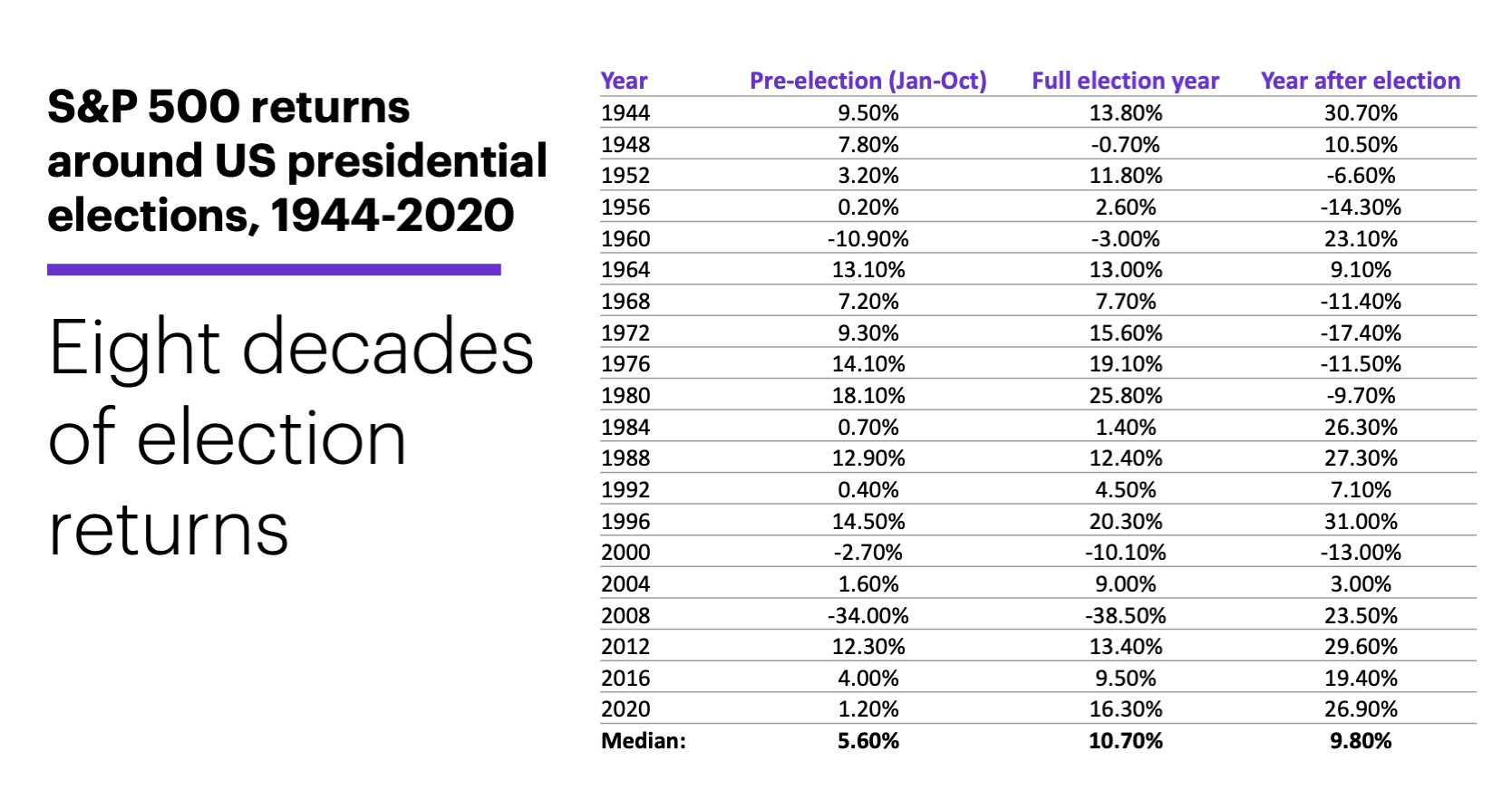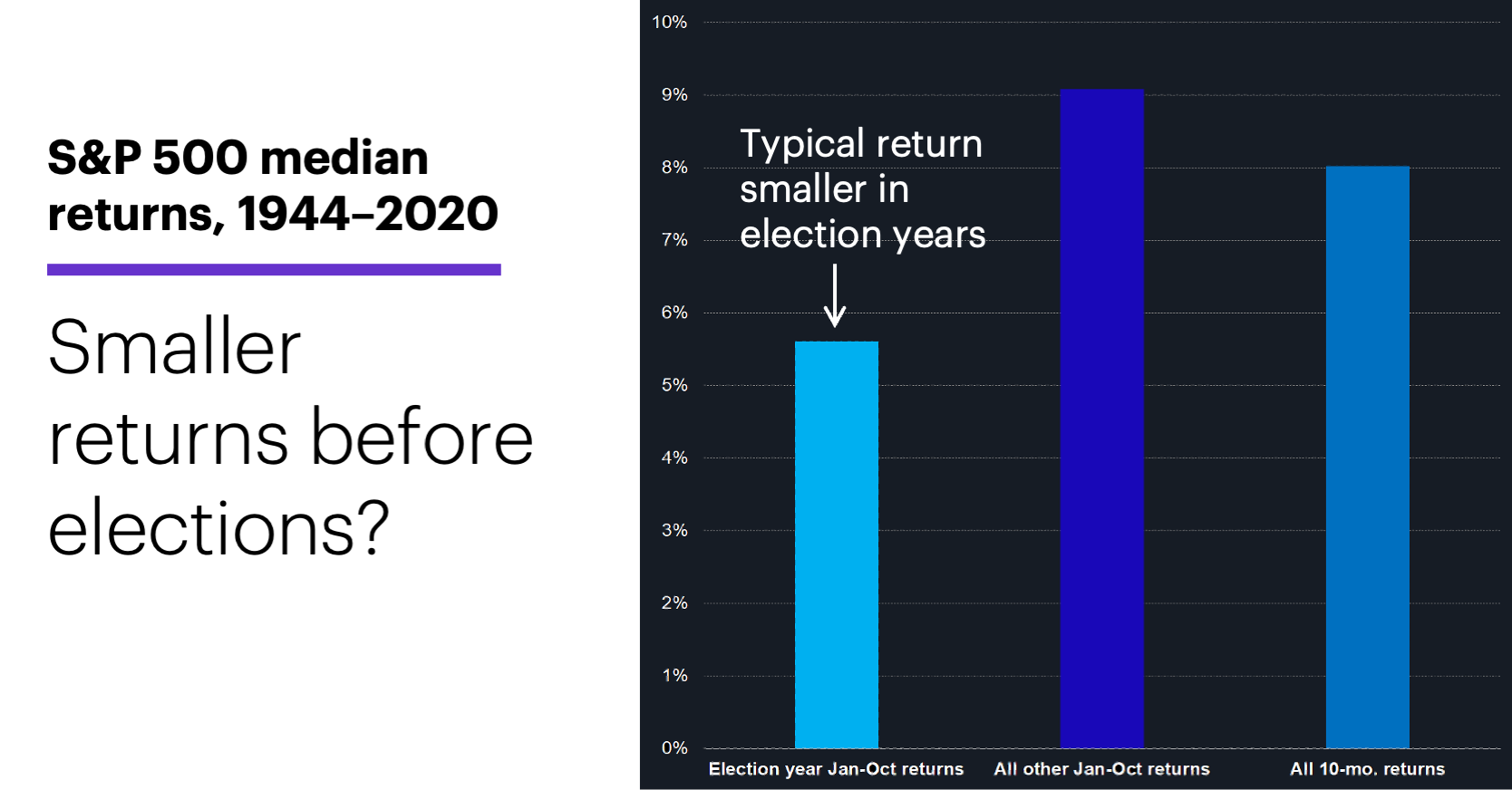Election year market patterns
- Stock returns sometimes muted around presidential elections
- Tendency most noticeable in 10 months before elections
- S&P 500 up in 16 of past 20 election years, though
Few people need reminding that the next US presidential election is a mere 10 months away. But more than a few of us would benefit from a refresher on how the stock market has performed before and after elections.
While the policy choices made by Congress or the White House certainly have the potential to impact the economy, is there any evidence elections drive investor behavior on a shorter-term basis? As we’ll see, that’s a difficult question to answer, although the US market has displayed some interesting patterns before and after presidential elections over the past 80 years.
The following table shows the S&P 500’s (SPX) returns around the past 20 presidential elections for three periods—the 10 months preceding the November election (January–October), the full election year, and the year after the election year:

Source (data): Power E*TRADE. (For illustrative purposes. Not a recommendation. Note: It is not possible to invest directly in an index.)
Before discussing the January–October period, it’s worth noting the market’s overall underperformance in election years and the years immediately after them (second and third columns). The SPX’s median returns for both (10.7% and 9.8%) were smaller than the median annual return for all other years since 1944 (12.6%), although the individual returns in these years ranged from +25.8% (in 1980) to -35.8% (in 2008).
That 2008 return, especially, highlights something important: It’s a mistake to assume an election is the primary market catalyst in a given year. For example, it’s more likely the financial crisis—not the presidential election—was the defining event in terms of 2008’s stock market’s performance. (One could argue the financial crisis may have a had a greater influence on the election than the other way around.)
However, there was a split in how often the SPX rallied in these years. For example, the SPX closed higher in 70% of the years (28 of 40) that weren’t presidential election years or the years after them (one year, 1947, was flat). By comparison, the SPX closed higher in 16 of 20 election years (80%), but only 13 of 20 times (65%) in the years after elections.
Now let’s turn to the January-October returns. The following chart shows that since 1944, the SPX’s median return for this period during election years (5.6%) was smaller than both the median January-October return for non-election years and the median return for all 10-month periods since 1944:

Source (data): Power E*TRADE (For illustration purposes. Not a recommendation. Note: It is not possible to invest directly in an index.)
Also, this somewhat subdued performance occurred even though the SPX rallied 17 out of 20 times (85%) from January through October in election years, which is actually higher than its percentage for non-election years (70%).
Were the muted January-October returns tied to “election uncertainty”—that is, were stock investors more cautious because they were unsure about the direction of policy, depending on which presidential candidate or party came out on top in the elections? Perhaps, although the track record suggests other factors can play a much bigger role in any given year.
Today’s numbers include (all times ET): Challenger Job Cut Report (7:30 a.m.), ADP Employment Change Report (8:15 a.m.), S&P Global Services PMI (9:45 a.m.).
Today’s earnings include: Conagra Brands (CAG), RPM (RPM), Simply Good Foods (SMPL), Walgreen’s (WBA), Aehr Test Systems (AEHR).
Click here to log on to your account or learn more about E*TRADE's trading platforms, or follow the Company on Twitter, @ETRADE, for useful trading and investing insights.